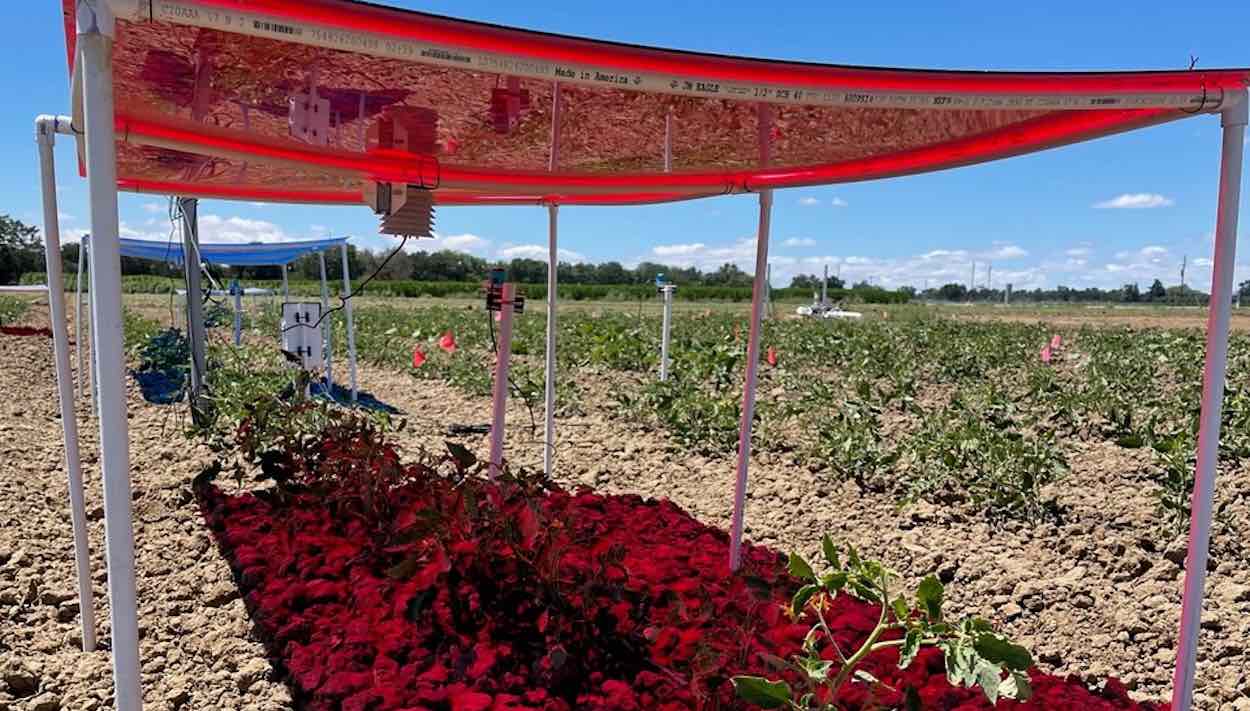
This may well be perfect for greenhouses. In the open field they will have to be planned well. We do have fallow seasons after all.
Most of our best crops actually do best with some shading.and avoiding sun forced yields may work very well. A yield of best quality food is also welcome if we can increase our real deliveries as a percentage.
Shade panels also need to be made wind tolerant and that wil really need to be addressed as overengineering may well be too costly.
Researchers Harness Sunlight to Produce Both Power and Food—Using Light to Improve Each Harvest
By Andy Corbley
-Jan 19, 2023
FacebookTwitterEmailRedditMorePhotograph courtesy of UC Davis
Scientists working in techno-agriculture have found that by covering crops with canopies of translucent solar panels, they can separate the light which generates energy from the light that leads to photosynthesis in plants.
This not only means a farmer could generate solar energy and crops at the same time, but better crops, and more energy than could be achieved with the two operations separately.
Different-colored light from our sun impacts biology on Earth in different ways. The blue spectrum of sunlight for example is what life uses to detect daytime, and is a trigger for major hormonal shifts in animals and plants from active to inactive behaviors.
Red light on the other end is preferentially what plants use to turn carbon dioxide into sugars. Red light isn’t as hot as blue light, and plants exposed to growing conditions with red light spectra show less heat stress than those exposed to blue light. Blue light on the other hand is what is needed to generate solar power in any meaningful way.
With this in mind, associate professor Majdi Abou Najm from the Univ. of California, Davis, tested organic solar panels made from translucent material that absorb the blue light to generate electricity, but allow the red light with its longer wavelengths to pass through to the crops below.
At the UC Davis Agricultural Experiment Station, Abou Najm and his team planted three different plots of processing tomatoes, a common central valley California crop, under a canopy of selective red light, another of selective blue, and a third uncovered plot.
While the filtered light crops resulted in one-third less yield from the reduced sunlight, they produced half as many heat stressed, or “bad” tomatoes as the uncovered plot.
When the electricity and water savings are added in, the resulting picture becomes very profitable.
GNN has reported before on the recent phenomenon of “agrivoltaics,” a practice of growing shade tolerant crops under solar panel arrays. The shade protects the crops from heat stress, while the plants’ transpiration humidifies the air beneath the panels, cooling them down and increasing their electricity output.
Abou Najm sees his translucent solar canopies as the inevitable next step in this practice as one doesn’t need to alternate rows of panels, nor deprive plants of the sun’s feeding rays.
Another benefit of these panels is that like plants’ leaves, they absorb light from the sun indirectly, unlike the large metal panels typical of arrays and rooftops that need direct sunlight to function.
No comments:
Post a Comment